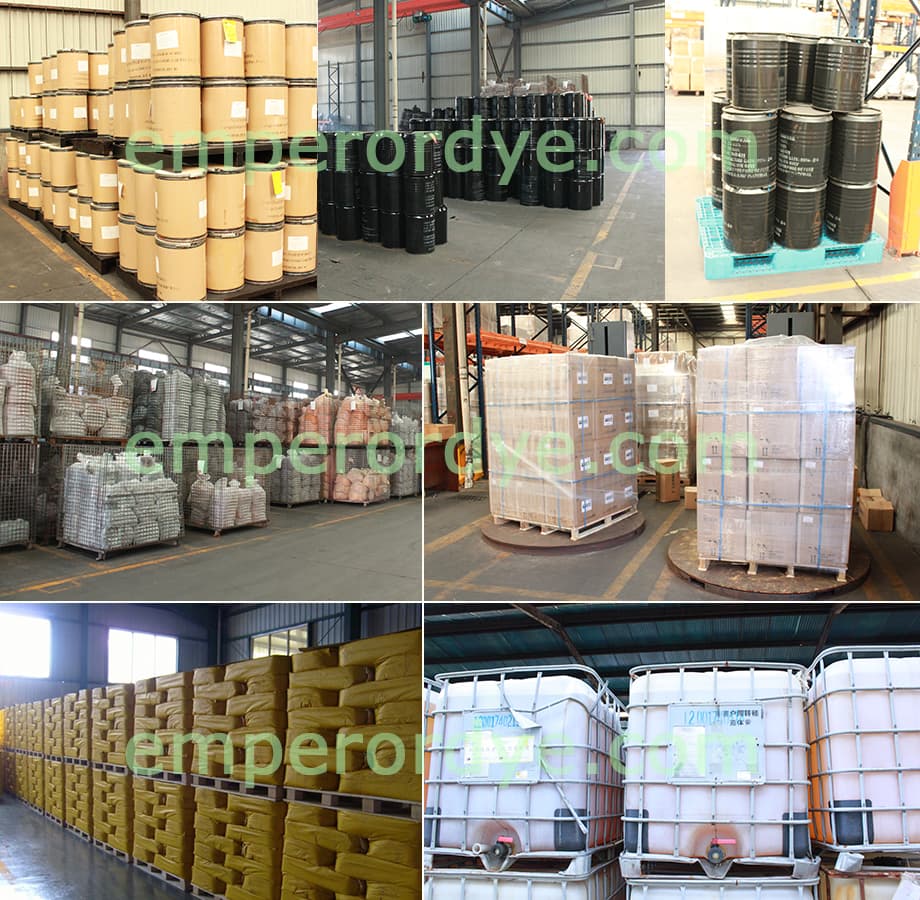Application and parameters of Acid Brown 33
Acid Brown 33
- TRADE NAME:
- Acid Mordant Brown 33
- Acid Mordant Brown RH
CI.NO: 13250
Acid Brown 33 Physical and Chemical properties
|
Dyeing method |
Dyeing temperature(℃) |
pH |
Leveling (grade) |
Displacement(grade) |
Discharge |
Solubility(g/L) |
|
After, same, pre |
95~100 |
4~5 |
4~5 |
4~5 |
well |
100(80℃) |
Colour Fastness Test
|
Sun exposure |
soaping60℃ |
Perspiration |
friction |
ironing |
Drift-resistant |
Dry cleaning |
||||||||
|
1/3 depth |
1/1 depth |
2/1 depth |
original color change |
white fiber stain |
original color change |
white fiber stain |
dry |
wet |
original color change |
white fiber stain |
Chlorine bleaching |
Oxygen bleaching |
original color change |
white fiber stain |
|
3 |
5 |
5~6 |
3~4 |
5 |
4~5 |
5 |
4~5 |
4 |
4~5 |
5 |
3 |
1 |
4~5 |
5 |
Acid medium brown RH Appearance is generally yellow-brown powder, soluble in alcohol, yellowish brown, soluble in ethylene glycol ether, slightly soluble in acetone, insoluble in other organic solvents. The dye is red to reddish brown in concentrated sulfuric acid. After dilution, there is an orange precipitate; in red concentrated nitric acid, it turns red and turns yellow brown. The aqueous solution is yellowish brown, and concentrated hydrochloric acid turns brownish orange; concentrated sodium hydroxide solution turns orange.
Acid Brown 33 Application:
Use condition:
1. Wool dyeing: Acid medium brown RH is dyed in a weak acid bath with a pH of 4 to 5. After the dyeing stage, an appropriate amount of sulfuric acid can be added to facilitate the exhaustion of the dye. The acidic medium brown RH is acidic. The main variety of medium brown dyes, dyeing on fine carded fabrics can be widely used.
2. Silk staining: After the media method or pre-media method, the color fastness (grade) can be seen in the table below.
|
Project |
Sun exposure |
soaping |
Precautions |
Oxygen bleaching |
|
original change |
7 |
5 |
3~4 |
1 |
3. Nylon dyeing: It is only suitable to use the post-media method. After adding chromium salt, it needs to be boiled for 90~120min. The acid medium brown RH is also used for dyeing elastic nylon yarn. The color fastness is excellent, but the dyeing process is complicated and generally available. Neutral dye instead.
4. Blending of blended fabrics: When the wool is dyed in the same bath as the various fibers, the color of the nylon is slightly lighter than that of the wool, the color of the silk is very light, the two vinegar fibers are stained, and the cotton and the viscose are slightly stained.
5. Printing: It can be printed directly on the wool or silk fabric pretreated with chromium acetate.
Precautions
1. When dyeing wool, the amount of sulfuric acid in the dyeing bath is much, and the color light turns red; when the mordant is used, the amount of sodium dichromate is more, and the color is more yellow. Therefore, the color difference is easy to occur between the sample and the batch. Control the amount of dyeing material to obtain a stable color light. After dyeing, it is soaped or cooked at high temperature, and the color light is slightly yellow.
2. Acid Brown 33 is sensitive to acid and alkali, such as too much sulfuric acid, or aldehydes in dyeing auxiliaries, the color will turn red. If the dyeing is treated with strong alkali, the color will be yellow, but after treatment with acid It can still be recovered. In addition, the dyeing of acidic medium brown RH should not be carbonized and should be noted.
3. When dyeing, avoid using copper or iron machines and iron-containing yuan Ming powder. If necessary, add 0.2~0.5g/L sodium hexametaphosphate, and the color change can be improved.
Packing:

20 or 25kg/compound bag, carton box, iron drum, fiber durm for powder dye and 1000kg/tank for liquid dye
Acid Brown 33 Material Safety Data Sheet (MSDS)
- Inquiry for Acid Brown 33
- Question: *
- You can learn about other products:
- Acid Brown 75
- Acid Brown 165
- Acid Brown 298
- Acid Brown 348
- Acid Green 28
- Acid Black 52
- Acid Black 11
- Acid Black 2
- Acid Black 1
- Acid Violet 54
Products Catalog
- solvent red 24
- solvent red 49
- solvent red 122
- solvent red 111
- solvent red 146
- solvent red 195
- solvent yellow 21
- solvent yellow 33
- solvent yellow 93
- solvent yellow 98
- solvent yellow 114
- solvent orange 60
- vat red 41
- solvent green 3
- solvent green 5
- solvent blue 70
- solvent blue 104
- solvent black 3
- solvent violet 31
- solvent violet 13
Copyright right HANGHZOU EMPEROR CHEMICAL CO,,LTD © 2019 All rights reserved.

 Pусский
Pусский